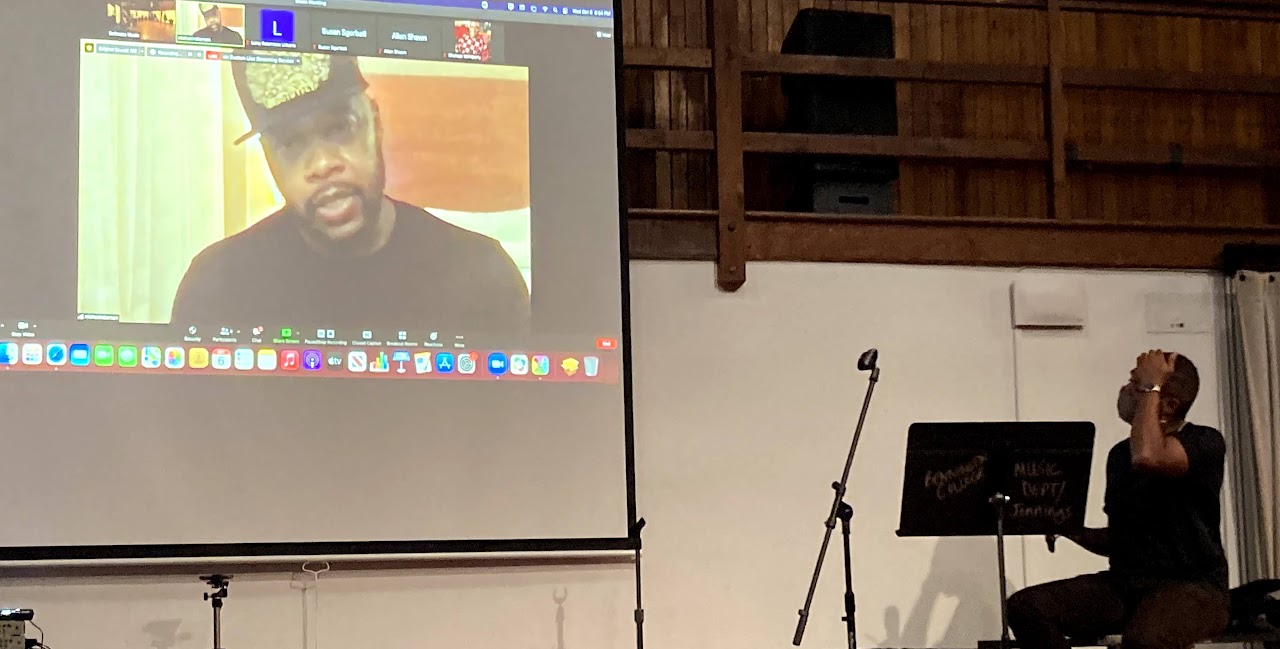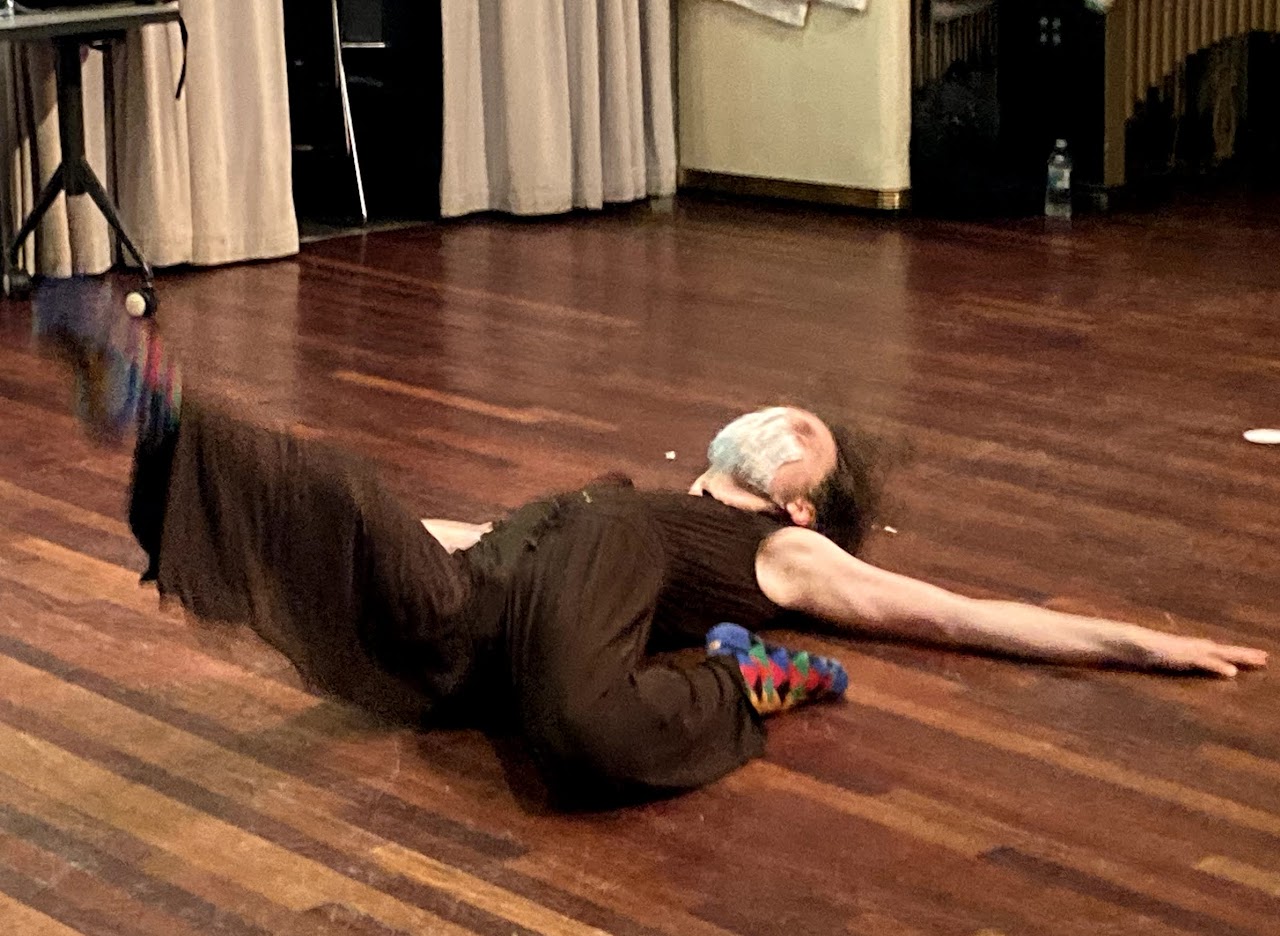



here's whats happening... or what's happened.




('25) co-head editor, digital content lead studies Psychology and Education. They are from the Bay Area (Oakland, California) and really enjoy taking advantage of the great outdoors in Vermont. They make a lot of the non-literature submissions, and always encourage others to do the same (please please please). For the Fool, Annika does far too much, but is trying to narrow down to just being the lead on the digital content. Remember the launch party of Fall '23? Yeah. That was them.
.
you can find more news in the news section of the website. its not that hard lol
.
 Photo by Annika Owenmark
Photo by Annika Owenmark
.
 Photo by Annika Owenmark
Photo by Annika Owenmark
.
 Photo by Annika Owenmark
Photo by Annika Owenmark
23.OCT.2021
On Wednesday, October 6th, Ricky Tucker and Michael Roberson Maison-Margiela (who Tucker called his “gay dad”) presented a touching, brutally honest, beautiful and engaging story- that of Ballroom culture. Over a projected Zoom call, Michael lovingly told the story of the origin of drag culture and drag balls as it grew out of the back halls and basements of the Harlem Renaissance into an international and televised scene.
Ballroom has always been a revolutionary act, beginning as a way for black queer people to gather when intersecting oppressions excluded them from both black and queer communities. They gathered on Sundays mostly, as it was on church days they felt most shunned by straight black society. Today, we know drag as a performance most commonly put on by gay men in an imitation of womanhood, however, when it started, drag queen was another word for trans woman. Ballroom was created by people as a space to safely present femininely. Michael called them radical “womanist” and “Black trans feminist” spaces. For black and brown trans women in the 1970s and 80s, joyfully being themselves was an act of revolution. Unfortunately, trans expression by people of color still is often viewed as boundary-pushing.
Drag performances were not only revolutionary safe spaces but also a way to make a living. Money made in drag shows was used to pay for essentials including rent, food, gender affirming procedures, clothes, and makeup. In 1977, Crystal LaBeija founded the first “house,” The House of LaBeija. It would change the drag scene forever. The idea of houses, like families, that work together to afford rent and food and to form communities of solidarity quickly spread. Members of the ball community were often in search of “found families,” as many were cast out of their biological families. After such traumatic incidents, houses served not just as practical alliances, but comforting ones. Houses were led by Mothers and later, Fathers- older members of the community who could provide both emotional and financial support for their ‘children’ as well as guidance and coaching about their drag.
Quickly, houses popped up in cities around the country with gay communities, especially those with large black and brown populations. Houses opened up ballroom culture to Latine queer communities, particularly in New York and California. The first Latine house, The House of Xtravaganza, was founded in 1982 by Hector Valle. House ball grew to international scale as well, first expanding beyond the States in Paris. Today, there are houses in most large European cities, as well as Brazil and other South American countries. As drag and ballroom culture began to expand, it began to come close to the limelight. In 1990, Madonna released the hit song, “Vogue.” In the music video, dancers were featured voguing, a form of dance which originated in drag scenes. While the introduction of drag to the broader public did help to spread awareness and further acceptance of trans and queer people of color, it also jeopardized some drag spaces. Rich cisgender heterosexual white people wanted to experice drag for themselves and would enter these spaces uninvited, breaking the tradition of ballroom as a community-focused safe space.
Another threat to the community was the HIV/AIDS crisis, which hit black and brown queer people the hardest. Access to health care, information, and other services was limited for all queer people but nearly non-existant for queer people of color. Ball houses supported each other through loss and as more information about the virus became available, they kept each other informed and did their best to protect each other. HIV/AIDS wasn’t the only thing afflicting the ball community. The opioid epidemic and rampant hate crimes meant that the life expectancy for black and brown queer people was upsettingly short. Providing education and spreading awareness of these huge issues became a mission for drag artists that carries on to this day. You can learn more about House Lives Matter, a contemporary movement, here.
After the presentation, students took a quick break to move chairs and get ready for some dancing. Ricky Tucker explained the five elements of voguing- Hands, Catwalk, Duckwalk, Spins and Dips, and Floor Performance- with helpful demonstrations from two senior dance students. The whole room was full of dancing and joy as “Plastic Dreams” by Jaydee blasted over the speakers.
It was a comfortable environment for dancers with skill levels from Isaac, dipping flawlessly, to me, falling on the floor while trying to duckwalk. It was as ballroom should be — comfortable, fun and a space for intergenerational teaching.
Ricky Tucker’s book, “And the Category Is…” comes out January 25th, 2022.You can find more information and how to pre-order here.
Watch the whole event here.